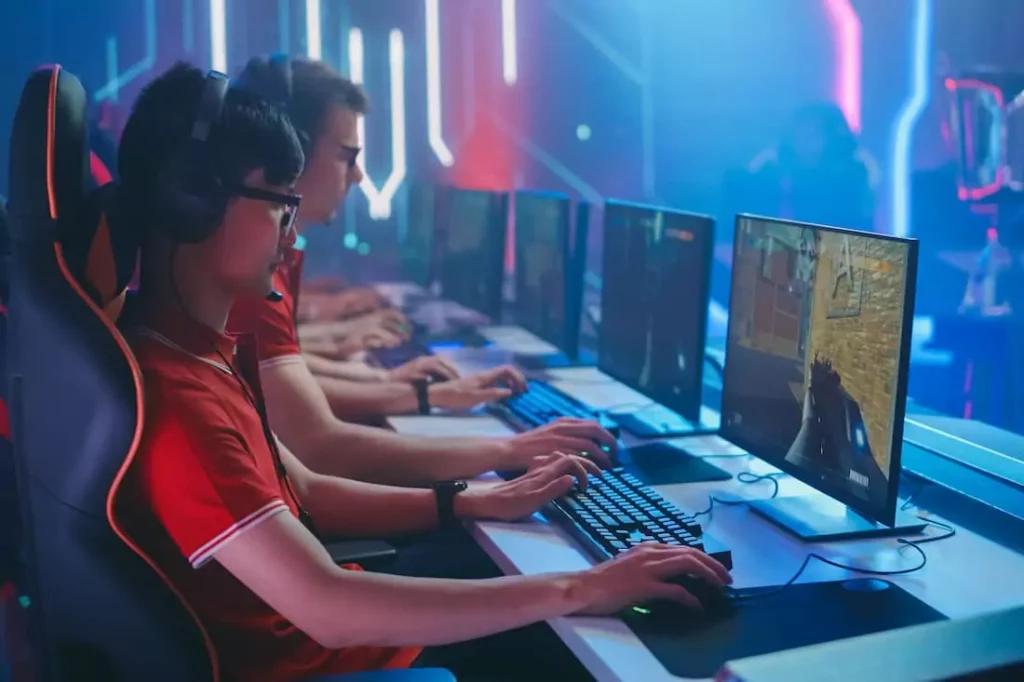Introduction
The world of online Mahjong Ways 2 gaming is vast and diverse, encompassing everything from relaxing pastimes to highly competitive environments. The spectrum of online gaming caters to millions of players worldwide, offering unique experiences that range from simple enjoyment to intense competition. This article explores the differences and dynamics between casual gaming and competitive gaming, shedding light on how they shape the industry and the players involved.
Understanding Casual Gaming
What Defines Casual Gaming?
Casual gaming refers to gameplay that is accessible, low-stress, and typically designed for short, enjoyable sessions. These games often feature intuitive controls, straightforward mechanics, and are aimed at a broad audience. Titles like Candy Crush, Among Us, and Animal Crossing exemplify the casual gaming experience. Players can dip in and out of these games without the need for extensive commitment or specialized skills.
The Appeal of Casual Games
The popularity of casual gaming lies in its accessibility. With the rise of mobile gaming and easy-to-use interfaces, casual games have become a go-to choice for people of all ages. They provide a quick escape from daily life, requiring minimal effort while delivering maximum fun. Casual gaming also fosters inclusivity, drawing in players who might not identify as traditional gamers but still seek entertainment and relaxation.
Social Connectivity in Casual Games
Casual games often emphasize social connectivity. Features like multiplayer modes, leaderboards, and cooperative tasks encourage players to interact with friends and family. Games like Words with Friends or Clash Royale highlight this social element, making casual gaming a shared experience that bridges geographic and generational gaps.
Diving Into Competitive Gaming
What Defines Competitive Gaming?
Competitive gaming, often associated with esports, involves skill-based play where players strive to outperform opponents in high-stakes environments. Games like League of Legends, Counter-Strike: Global Offensive, and Valorant are staples of the competitive gaming world. Unlike casual gaming, competitive gaming requires dedication, practice, and a deep understanding of game mechanics.
The Rise of Esports
Esports has transformed competitive gaming into a global phenomenon. Tournaments like The International (Dota 2), Fortnite World Cup, and Overwatch League attract millions of viewers and award players with substantial prizes. The professionalization of gaming has created opportunities for players to turn their passion into lucrative careers, complete with sponsorships, brand deals, and celebrity status.
Psychological Elements of Competitive Gaming
Competitive gaming taps into players’ desire for achievement, recognition, and mastery. The adrenaline rush of victory and the learning curve of improvement keep players engaged for hours. However, the high-pressure environment can also lead to stress and burnout, highlighting the need for balance and mental resilience.
The Bridge Between Casual and Competitive Gaming
Casual Players Transitioning to Competitive Play
Many gamers start as casual players and gradually move into the competitive scene. Games with ranked modes, such as Rocket League or Call of Duty: Warzone, encourage players to test their skills against others. This progression allows casual players to explore their competitive side while improving their abilities.
Hybrid Games Catering to Both Audiences
Some games blur the lines between casual and competitive gaming by offering modes and features for both types of players. Titles like Fortnite and Apex Legends provide casual-friendly environments while also hosting competitive tournaments and ranked ladders. This dual approach broadens the appeal of these games, ensuring a diverse player base.
Technological Advancements Driving the Spectrum
Cross-Platform Play
The introduction of cross-platform play has revolutionized the gaming landscape, allowing players from different devices to compete and collaborate. This inclusivity bridges casual and competitive gamers, fostering a more unified community.
Streaming and Community Building
Platforms like Twitch, YouTube Gaming, and Facebook Gaming have amplified the visibility of both casual and competitive gaming. Casual players share their experiences through streaming, while competitive gamers showcase their skills in tournaments and live events. These platforms create a shared space where both communities thrive.
Virtual Reality and Augmented Reality
Emerging technologies like virtual reality (VR) and augmented reality (AR) are expanding the possibilities of online gaming. While VR offers immersive casual experiences, AR games like Pokémon GO encourage friendly competition in real-world settings, highlighting the versatility of these technologies.
Challenges Across the Spectrum
Toxicity in Gaming Communities
Both casual and competitive gaming face challenges such as online toxicity and harassment. Ensuring a safe and inclusive environment is essential for maintaining healthy gaming communities.
Balancing Accessibility and Skill
Designing games that cater to both casual and competitive players can be challenging. Developers must strike a balance between accessibility for newcomers and depth for experienced players, ensuring that games remain engaging across the spectrum.
Conclusion
The spectrum of online gaming, from casual to competitive, offers something for everyone. Whether players seek relaxation, social interaction, or the thrill of competition, online gaming continues to evolve, fueled by innovation and a passionate community. By understanding the dynamics of casual and competitive gaming, we can appreciate the diverse experiences that make gaming such a captivating form of entertainment.


